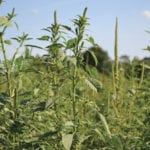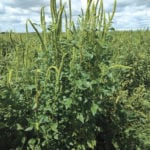Tammy Jones spent four hours last summer wrestling with about 300 waterhemp plants in a Manitoba field, yanking them out of the ground by the roots and carrying them to the field edge for destruction. The provincial weed specialist was trying to demonstrate the value of controlling what might seem to be small patches of









